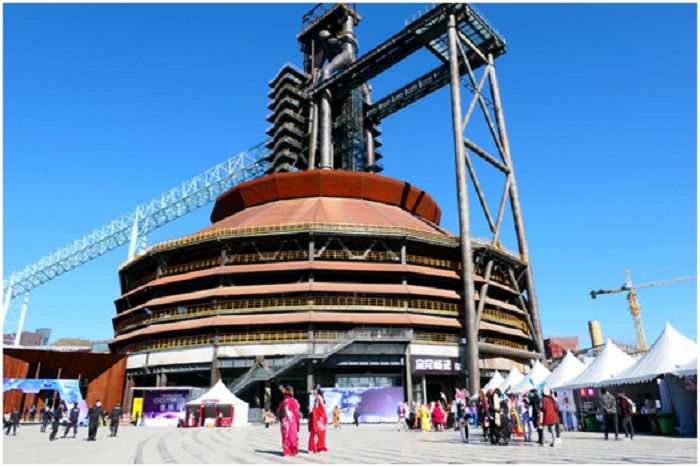



The China Science Fiction Convention 2020 was held at Shougang Industrial Park in Beijing’s Shijingshan district on Dec. 1 and 2, staging three grand themed exhibitions, seven forums and eight relevant activities.
Nearly 100 illustration works about famous Chinese science fiction The Three-Body Problem were displayed at the event, while the visual design sketches of the Chinese sci-fi blockbuster The Wandering Earth were also exhibited for the public, presenting the creativity of movie workers.
Frontier technological achievements that drive the development of the sci-fi industry, such as the new generation of information technologies and virtual reality, were showcased in a 3,000-square meter section. Twenty-four relevant exhibits were displayed for the public in the section, where visitors can experience a 5G world and interact with remote-control robots. In addition, a 1:1 replica of the DeLorean DMC-12 as featured in the original Back to the Future was also exhibited.
A report of China’s sci-fi industry was released at the event. According to the report, the industry created a value of over 65.87 billion yuan ($9.91 billion) this year, a big rise from the 45.63 billion yuan in 2018. Movies and games accounted for most of the industry’s market value, the report said.
“The movie The Wandering Earth achieved success in both box office and reputation, and the sense of responsibility, cooperation and loyalty showcased in it have also further driven the Chinese people’s patriotism and their enthusiasm for the sci-fi industry,” said Huai Jinpeng, executive vice president of the China Association for Science and Technology (CAST).
A total of 1,380 domestically developed online games were launched in China last year. Fifteen percent of them were themed with science fiction, generating revenue of over 43 billion yuan. In the first half of this year, the value of Chinese sci-fi games exceeded 22 billion yuan, indicating the huge potential of the market.
In recent years, China’s sci-fi industry has been enjoying robust development, with rapid growth of social institutions and industrial mechanisms, Huai said. He believes the sci-fi industry has become an indispensable force driving technological innovation and social progress, and bears important significance for enhancing the attraction of Chinese culture and spreading sci-tech civilization.
At the convention, Shijingshan district published 16 measures to facilitate the development of sci-fi industry, the first policy of Beijing to do so. The district established a special fund of 50 million yuan to support the industry, and tailored targeted plans in eight areas to better help it. For instance, it will invest on the R&D and application of digital imaging and synthesis, digital rendering, motion capture, centering on the making of sci-fi films and games.
“We have signed an agreement to move our business to the district,” said an executive of a Beijing-based provider of motion capture solutions. He said the 16 measures will help enterprises attract more talents and enhance technological innovation, thus igniting their enthusiasm for development.
Next, Shijingshan district will build a 106.7-hectare sci-fi clustering that includes an international communication center, a technology empowerment center, a consumption and experience center and a public service platform


The Executive and members of the.


The Acting Director, FCT Directorate of.


President Bola Ahmed Tinubu has been.



Barely a month after resignation of.


An Abuja based Legal Practitioner, Osuagwu.



Convener of Equitable Remedy, Mrs. Magaret.


Contractors handling the contract for city.


Nigerian government may have concluded plans.


The Diplomatic Correspondents Association of Nigeria.


A rights group, “Follow Me Talk.
Leave a Comment